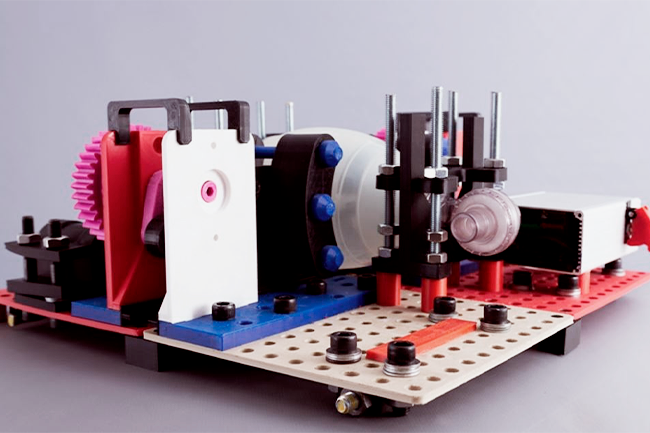The rising number of COVID-19 infections has prompted South African institutions to develop innovative solutions to address a shortage of ventilators.
An engineering team at the University of Johannesburg (UJ) has developed a portable, 3D-printed mechanical ventilator that can support multiple patients at a time. According to a UJ statement, the Aura Imprimere device, or ‘a breeze of air provided by printing’, has at its core an ambu bag (a self-inflating resuscitator bag). The ventilator’s customisable base plate, however, can accommodate bags in a range of sizes to cater for different patients’ needs. The device can also be upgraded with electrical components such as a control resistor, variable resistor and small programmable computer.
The ventilator uses a micro-controller to adjust the speed and rotational direction of two motors, to obtain a pressure-time profile that is suitable for respiratory assistance of patients, explains Tien-Chien Jen, UJ’s department head of mechanical engineering science and project team leader.
A pressure sensor detects irregularities in air pressure in the ambu bag, after which a motor controller will intervene. ‘Sensors that monitor the position of the ventilator arms are also used to enable the micro-controller to keep the mechanical arms of the ventilator in sync.’
The system can be easily assembled, and its battery pack allows off-grid operations for up to 90 minutes. The team will distribute the system on an open-source basis globally, providing free software and designs.
The Council for Scientific and Industrial Research has, meanwhile, developed a continuous positive airway pressure ventilator that provides a mild level of oxygenated air pressure to assist with breathing for early-stage COVID-19 patients. The ventilator, which was developed in collaboration with the Department of Trade, Industry and Competition and supported by the Solidarity Fund, can be used both in high-tech environments and temporary facilities, such as field hospitals and quarantine sites.


